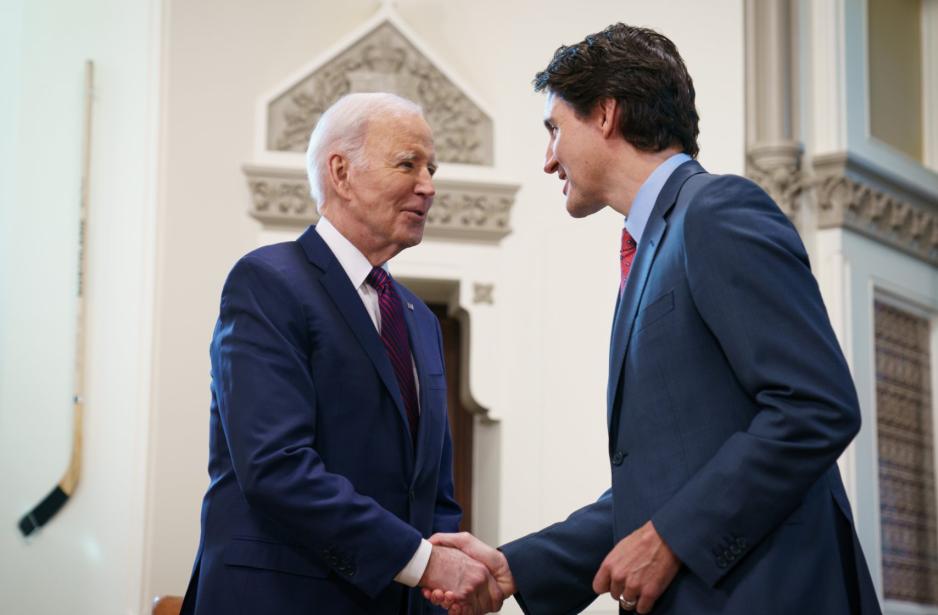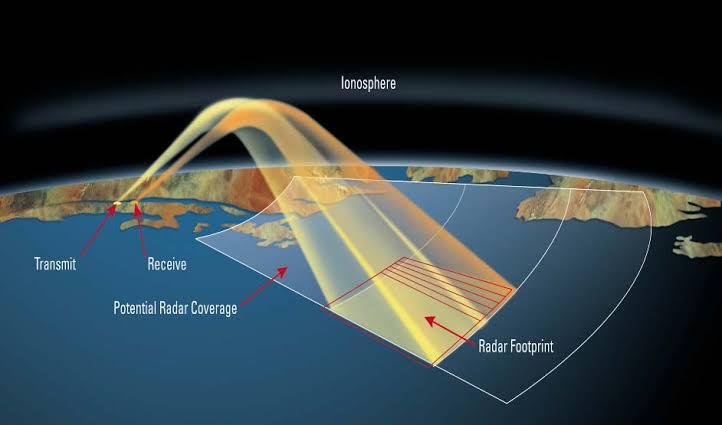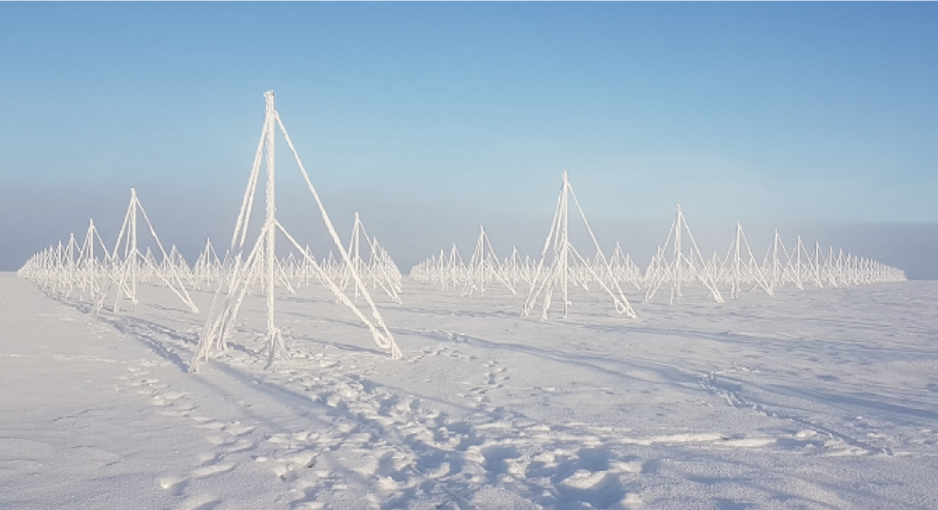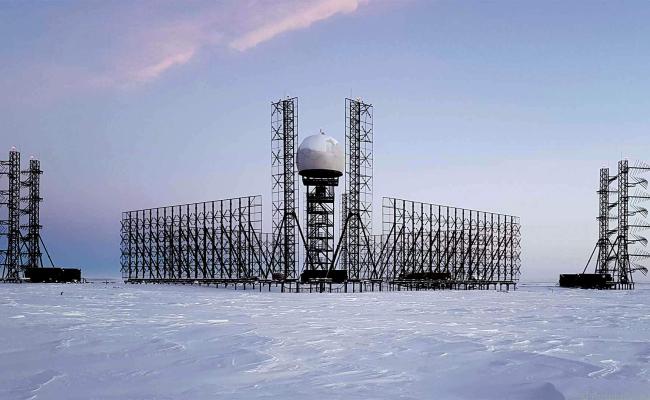US and Canada to Step up Arctic Capabilities with Over-the-Horizon Radar and Facilities for F35

President Biden and Prime Minister Trudeau during a meeting in Ottawa on 24 March 2023. (Source: Office of the Canadian Prime Minister)
The US and Canada agreed to step up and accelerate efforts to expand Arctic defense capabilities. The measures include two Over-the-Horizon Radar installations to monitor the northern skies and improved air base facilities ahead of deploying the F35 stealth fighter to the Arctic. However, Canada’s follow-through on some of these measures remains to be seen, experts say.
During a meeting in Ottawa, Canada, US President Joe Biden and Canadian Prime Minister Justin Trudeau announced a range of measures to step up the two countries’ capabilities in the Arctic.
The measures are part of a broader package to enhance North American defense following recent incursions into US and Canada airspaces by Chinese spy balloons and increased intercepts of Russian aircraft.
The defense package includes investments to upgrade the North American Joint Aerospace Defense Command (NORAD) with new long-range Over-the-Horizon Radar (OTHR) installations for the Arctic and modernized airbase infrastructure in the North to accommodate the latest 5th generation fighter jets like the F35.
“We both recognize the critical importance of this region to our collective security,” President Biden said.
He continued:
“Soon, Norad will have a new next-generation over-the-horizon radar to enhance our early warning capacity, upgraded undersea surveillance systems, and modernized infrastructure necessary to host the most advanced aircraft.”
I think Canadians are right to remain skeptical.
To what degree allocated funds are actually new spending and how much of it will materialize and over what time frame remains to be seen, experts say.
Rob Huebert, associate professor at the University of Calgary and a senior research fellow with the Centre for Military and Strategic Studies, notes that funds were originally dedicated in the budget back in April 2022 and the latest announcement involves some “budgetary sleight of hand.”
He also cautions that the bulk of the spending is bracketed over a 6-year period, which could allow for changes as part of future changes in government.
“I think Canadians are right to remain skeptical until Canada actually does what it says it is doing.”
Nonetheless, the fact that Arctic security and Canada’s investments in this area were front and center of the meeting, provide certain confidence that “Canada’s feet will be held to the fire” by the US in terms of following through on these projects, Huebert concludes.
To what degree threat levels have actually increased and warrant these expensive upgrades is also up for debate says Frédéric Lasserre, Professor for Political Geographyc at the Université Laval Québec. "There have been talks about the reported urgent need to improve NORAD's detection capacity and the Canadian interception ability since the onset of the war in Ukraine,” and the recent Chinese spy balloons gave new impetus to these discussions as well.
However, he cautions that portrayals of increased threat levels may have been heightened by media reports e.g. on hypersonic missile use in Ukraine. “No discussion at all took place either about the doctrinal logic between such a hypothetical strike” on the Arctic.
Improving surveillance of polar skies
Canada stated that as part of a USD 5.1bn investment to strengthen surveillance systems, it will construct two next generation Over-the-Horizon Radar systems “covering the Arctic and Polar approaches.”
Canada is not looking for national capabilities.
The timeline of the first facility, originally announced in 2022, will be accelerated to be ready by 2028. It will provide improved early warning and domain awareness in the High North.
It will be located in Canada’s east in the province of Ontario, while a second will be constructed in the Arctic itself, by 2032.
In project documents the two facilities are called Arctic Over the Horizon Radar (A-OTHR) and Polar Over the Horizon Radar (P-OTHR).
The former will provide “early warning radar coverage and threat tracking from the Canada-United States border to the Arctic circle” while the latter will “provide early warning radar coverage over and beyond the northernmost approaches to North America, including the Canadian Arctic Archipelago.”
Looking beyond the horizon
Over-the-Horizon Radar bounces signals off the atmosphere to “look” over the horizon and detect aircraft or missiles several hundreds or even thousands of miles away.
The technology itself is not new and dates back to the 1950s and 60s, but improved versions have seen a resurgence in recent years.

Depiction of OTHR signals bouncing off the Ionosphere to “look” over the horizon. (Source: US Navy)
Canada has been pursuing a P-OTHR program since 2014 and has established a testbed site in Nunavut which includes an 1024 antenna array. In 2019, Raytheon, a US defense contractor, secured a USD 22m contract from Canada to study the technology’s suitability in an Arctic environment.
Huebert cautioned that during the late 1990s and early 2000s Canada looked into new OTHR facilities but following technical challenges, e.g. interference from FM radio, abandoned the efforts.

The receiver array of Canada’s P-OTHR testbed in Nunavut. (Source: Defence Research and Development Canada)
The surveillance investments also include a network of distributed sensors, called Crossbow, across Northern Canada with classified capabilities, which will add “another layer of detection.”
These upgrades to NORAD will allow for earlier and more precise detection of threats, the leaders explained in a joint statement. Enhanced radar capabilities will be key to detect newer and faster objects, such as Russia’s “hypersonic missiles” unveiled by the country last year. (link)
Russia has for the past decade invested in log-range radar facilities in its Arctic as previously reported by HNN. Five OTHR are currently operational in the western part of Russia’s Arctic.
Unlike conventional radar, where the effective range is limited by the curvature of the earth, Rezonans-N radar provides over-the-horizon capabilities and can spot targets up to a distance of between 600-1,200 km and up to a height of 100 km.
Huebert also noted the mention of underwater detection measures in the joint statement. However, little information has been revealed about this aspect of beefing up NORAD, an area that should be of high priority according to Huebert.
Also read
Readying northern bases for the F35
Canada will also allocate additional USD 5.3bn to upgrade northern forward operating locations “to support 5th generation aircraft” like the F35. The measures include airfield improvements and facilities for crews, fuel, and munitions.
The goal is to “deter and defend against emerging threats to our air and sea space and compete with China and Russia for years to come,” a joint statement explained.
The investments would represent a significant upgrade into Canada's northern airbase infrastructure, according to Lasserre. “Indeed, if the governments follow up on these declarations, it means temporary bases such as Iqaluit could be transformed into a permanent air force base - which will complicate its management since the airfield is shared with the civilian airport unless they considerably extend the base.”
Lasserre concludes that NORAD infrastructure may very well need improvements and modernization, but “the very recent and debatable threat assessment is rather poor to justify the huge sums engaged.”
Improved infrastructure across the North would give Canada a much better aerospace presence, but according to Huebert it is difficult to know how much has actually been earmarked.
Another area, in which Canada appears to completely defer to the US, are Arctic-focused space capabilities.
“We will be riding American coat tails with regard to radar satellite constellation replacements,” Huebert explains.
“My reading is that Canada is not looking for national capabilities but will buy into American satellite surveillance.”


